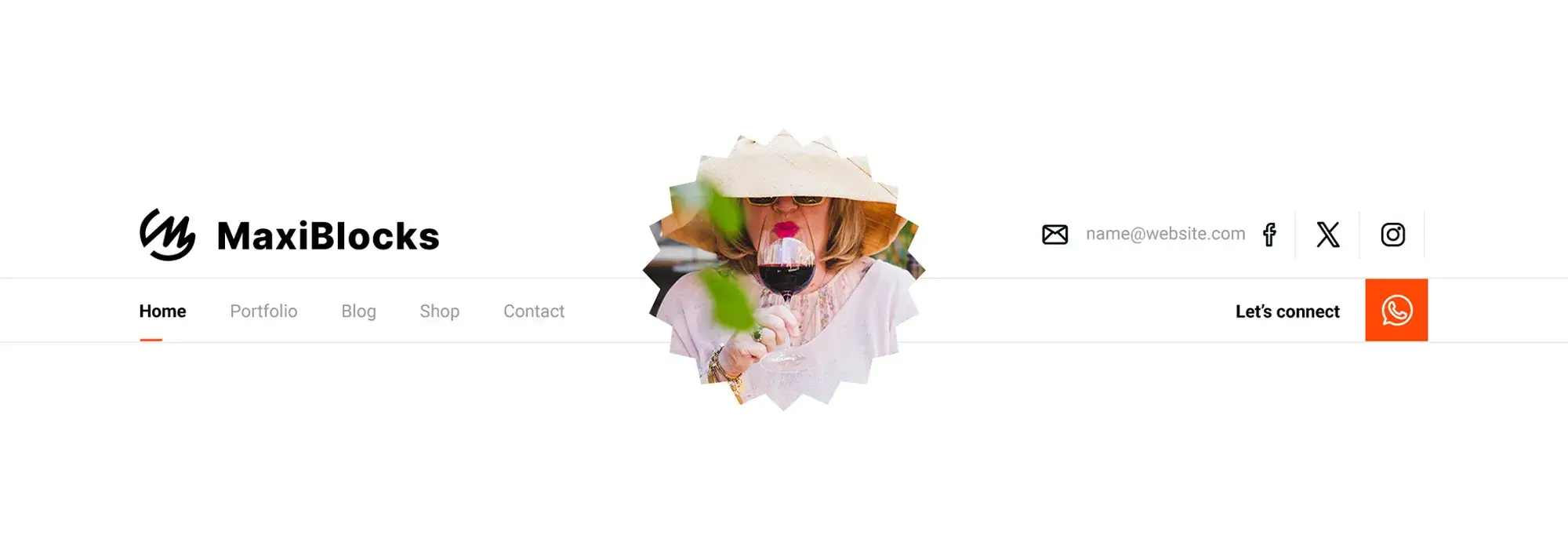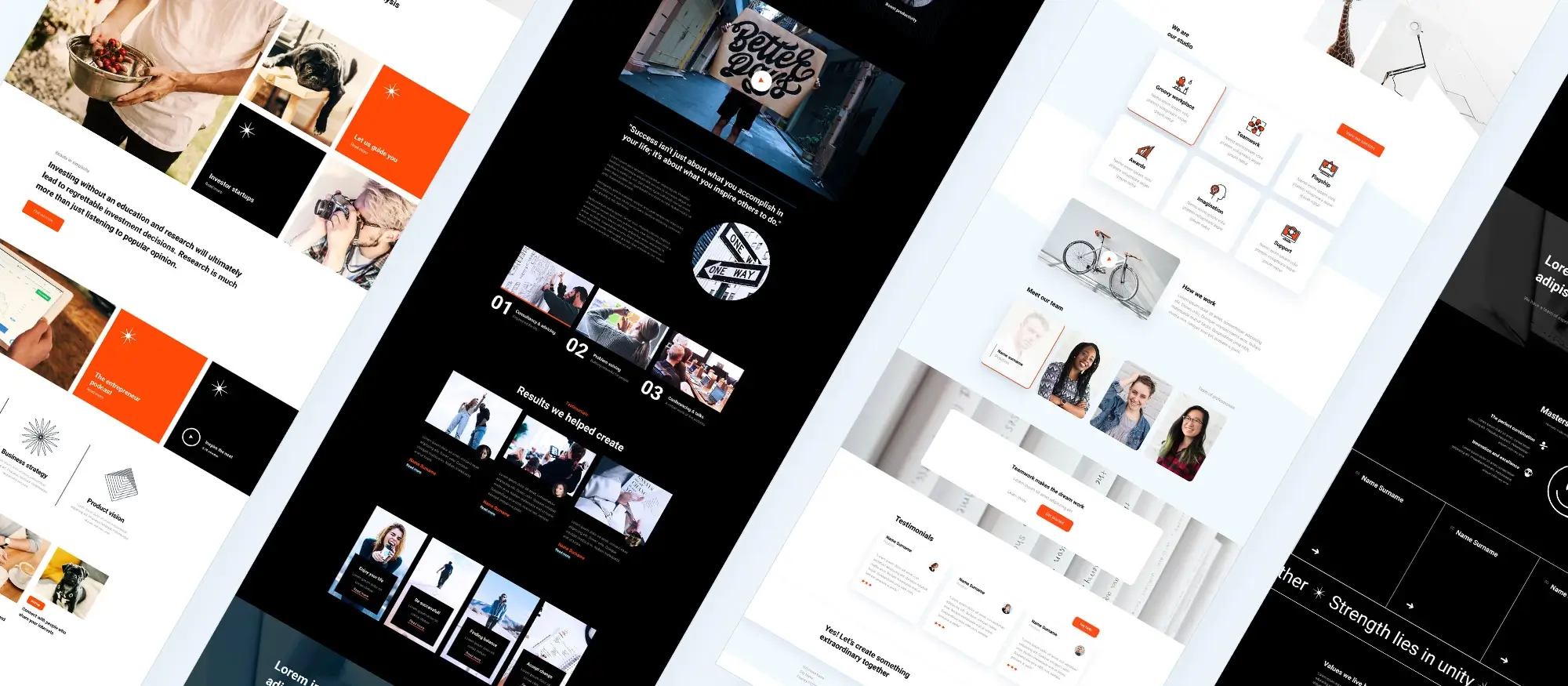Best WordPress block themes for blogs
Try MaxiBlocks for free with 500+ library assets including basic templates. No account required. Free WordPress page builder, theme and updates included.

Choosing the best WordPress block theme for your blog
Choosing the right WordPress block theme for your blog is essential. A good theme makes your site look professional, improves readability, and simplifies content management. MaxiBlocks is a powerful option, offering features that enhance your WordPress website design and support a better blogging experience.
What makes a good WordPress block theme for blogs
When selecting a block theme for blogging, prioritise:
- Customisation – so you can tailor the layout to your needs
- Readability – to ensure content is easy to follow
- Performance – for fast loading times and a smooth user experience
A quality block theme should be flexible, clean, and easy to work with.
Why MaxiBlocks is ideal for bloggers
MaxiBlocks is a top choice for bloggers. It includes built-in Gutenberg block styles and block patterns that make it easy to create cohesive, engaging layouts. Whether you’re writing personal stories or managing a content-heavy blog, MaxiBlocks adapts to your needs.
Popular WordPress block themes for blogs
Minimalist and clean themes
Minimalist block themes help your content stand out. With MaxiBlocks, you can apply clean Gutenberg templates that keep your blog tidy and distraction-free.
Magazine-style themes
For bloggers publishing regularly, a magazine-style theme helps organise content clearly. MaxiBlocks supports WordPress block templates that let you build structured, content-rich layouts.
Personal blogging themes
Personal blogs benefit from layouts that reflect your voice. MaxiBlocks provides block patterns that make it easy to design warm, engaging pages suited for storytelling.
Business and professional blogs
If your blog supports a business, a professional layout builds trust. MaxiBlocks helps you create polished designs using WordPress block themes that are both functional and on-brand.

Photo and media-rich blogs
If your blog is focused on visual content, you’ll need a block theme that highlights images and media beautifully. MaxiBlocks works seamlessly with Gutenberg templates to help you design a visually striking blog. You can use web design page blocks to showcase photos, videos, and galleries in a clean, structured layout.
Key features of MaxiBlocks for bloggers
Gutenberg block styles
MaxiBlocks integrates with Gutenberg block styles, allowing you to personalise the look and feel of your blog. With flexible design controls, you can easily create a distinctive and professional layout.
Gutenberg block patterns
Block patterns from MaxiBlocks help maintain consistency across your site. They allow you to organise your content visually, making it easier for readers to navigate and stay engaged.
Full site editing support
MaxiBlocks supports full site editing, giving you control over headers, footers, sidebars, and more. With access to the Gutenberg template library, you can customise every part of your site to match your brand.
How to choose the best WordPress block theme for blogging
When choosing a block theme for your blog, consider:
- Ease of use
- Customisation options
- Visual design quality
- Compatibility with Gutenberg
MaxiBlocks meets all of these requirements, making it one of the most versatile and blogger-friendly WordPress block themes available.
Subscribe to our newsletter
Step-by-step guide to setting up a blog with MaxiBlocks
Creating a blog with MaxiBlocks is quick and beginner-friendly. Follow these steps to get started:
- Install MaxiBlocks from the WordPress theme directory.
- Choose a template from the built-in library of WordPress block templates.
- Customise your layout using block patterns and design controls.
- Optimise for performance and UX with responsive design and lightweight structure.
- Use the WordPress pattern library to enhance your content with pre-built sections.
This setup process allows you to create a visually appealing, responsive, and fully functional blog with minimal effort.
Key features of MaxiBlocks for bloggers and creators
Extensive template library
MaxiBlocks includes a wide range of pre-designed pattern templates, suitable for blogs, portfolios, online stores, and business websites. Whether you’re starting a personal blog or building a brand site, you’ll find layouts that fit your goals.
Customisable style cards
Style cards are a unique feature that allows you to change your site’s look quickly. You can adjust colours, fonts, hover effects, and more. With over 100 style card variations, you can match your website to your brand while keeping a consistent design throughout.
Flexible custom blocks
MaxiBlocks provides a selection of custom blocks to structure your content. These include hero sections, testimonials, team blocks, headlines, and essential layout elements like containers, images, text, and buttons. This gives you the flexibility to build a unique blog that reflects your voice.
Responsive design with six breakpoints
MaxiBlocks ensures your site looks great on any device, from 4K monitors to tablets and mobile phones. With built-in responsiveness and six breakpoints, your content automatically adapts to different screen sizes improving both user experience and SEO.
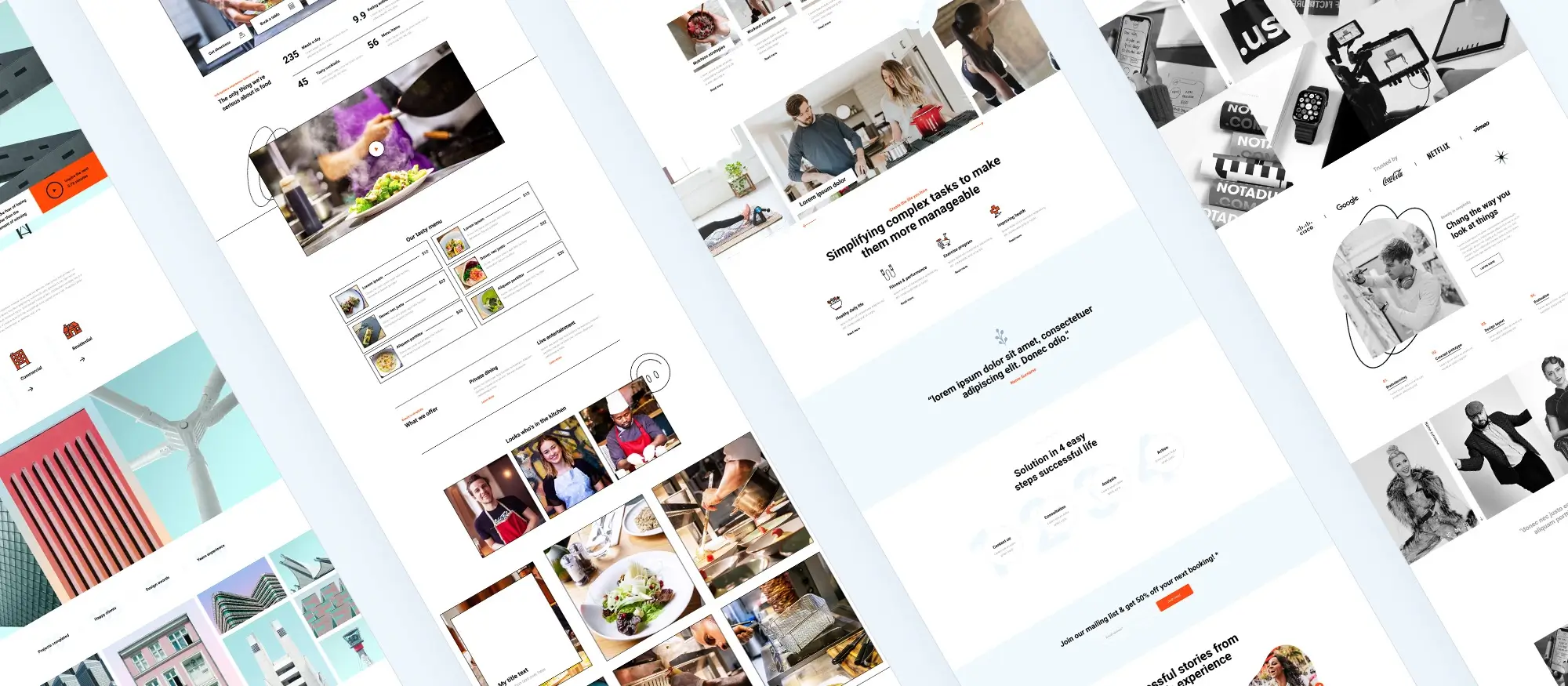
Clean, fast code for better performance
MaxiBlocks uses clean HTML and CSS, which helps reduce page load times and improve overall site performance. Fast-loading pages not only enhance the user experience but also contribute to lower bounce rates and better search engine rankings. This lightweight, efficient code structure supports high scores in speed and performance tests.
Built-in SVG design library
MaxiBlocks includes an integrated design library with over 13,400 free SVG icons and shapes. You can customise each icon’s colour, line weight, and fill directly in the editor. This makes it easy to add visual elements to your site without slowing it down, maintaining both style and performance.
No locked blocks, domain limits, or licence keys
MaxiBlocks offers complete design freedom. Unlike many page builders, it doesn’t restrict access to blocks or features. There are:
- No locked blocks – all content elements are available for free
- No domain limits – ideal for agencies and users managing multiple websites
- No licence keys – making installation and setup hassle-free
This open, flexible approach makes MaxiBlocks a powerful choice for both beginners and professional designers.
Build like a pro
Exploring the free Gutenberg WordPress template library by MaxiBlocks
MaxiBlocks offers a comprehensive library of free and premium pattern templates, making it easy to design professional websites. The free Gutenberg WordPress template library is ideal for both beginners and experienced web designers. With hundreds of layouts to choose from, you can quickly find a design that matches your brand and start customising it straight away.
How to start a project using MaxiBlocks templates
Launching a project with MaxiBlocks is simple and designed to speed up your workflow. Follow these steps:
- Log into your WordPress dashboard.
- Go to Plugins > Add New and search for MaxiBlocks.
- Install and activate the plugin.
- Browse the pattern library and select a template that suits your project.
Once a template is applied, you can begin customising it to match your style and content.
Use style cards to personalise your site
Style cards allow you to instantly apply new design elements like colours, fonts, links, and hover effects giving your website a unique look while keeping your layout consistent.
Add custom blocks to structure your content
Choose from a variety of custom blocks such as hero sections, testimonials, and call-to-action elements to build compelling, structured content that supports your goals.
Responsive design with six breakpoints
MaxiBlocks ensures that your website is fully responsive, adapting seamlessly across all screen sizes from 4K monitors to smartphones.
No restrictions, no licence keys
One of the standout benefits of MaxiBlocks is its open and user-friendly model. There are:
- No locked features
- No blocked blocks
- No domain limits
- No licence keys required
This level of freedom makes MaxiBlocks one of the most flexible and accessible WordPress design tools available.
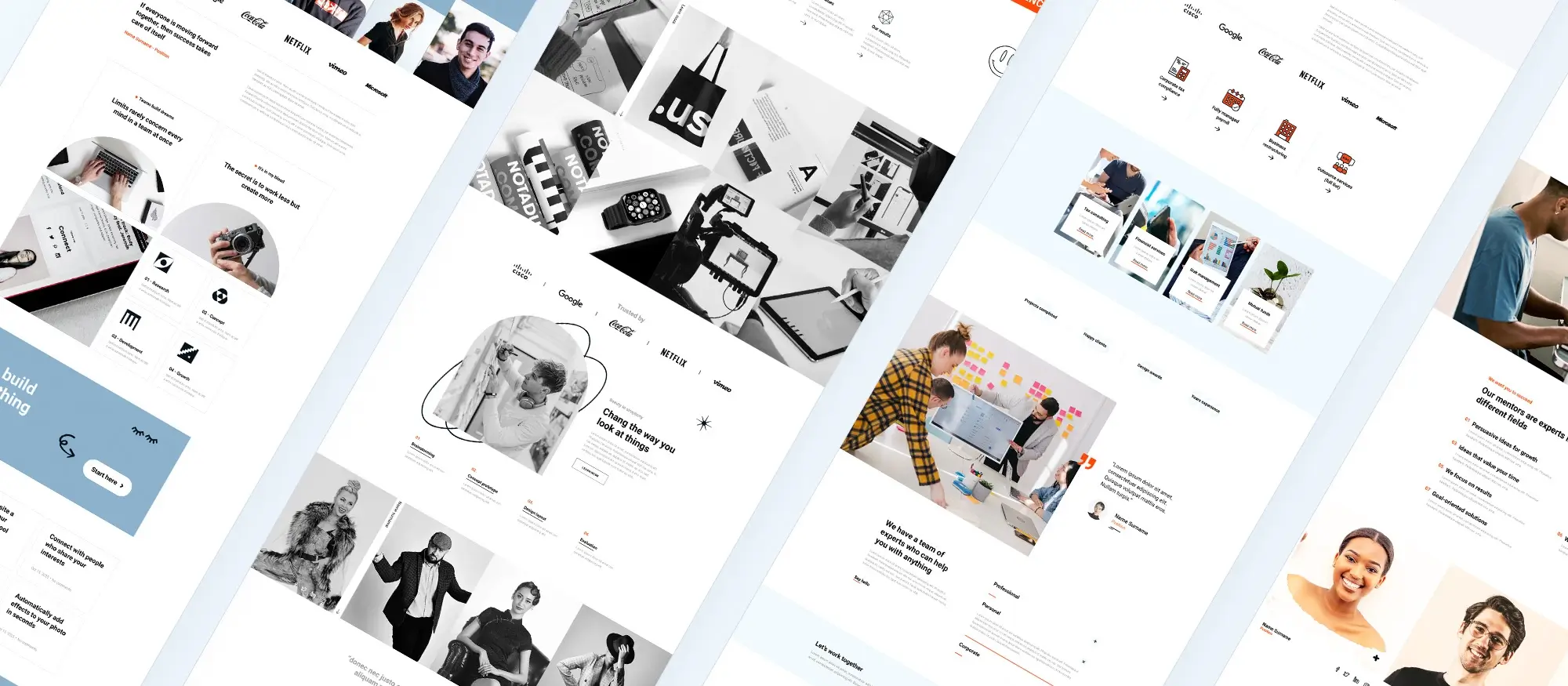
The difference between a pattern and a page template
What is a block pattern?
A pattern (or block pattern) is a small, pre-designed group of Gutenberg blocks that can be inserted into any post or page. Patterns are ideal for creating consistent design elements such as testimonials, call-to-action sections, or image grids that you can reuse across your site. They are easy to customise and help maintain a cohesive layout without starting from scratch each time.
What is a page template?
A page template provides a complete layout for an entire page. It includes multiple blocks already arranged into a full design, giving you a head start when creating a new page. Unlike patterns, templates cover the entire structure of the page, such as headers, content sections, and footers.
Key difference
- Block patterns are reusable sections for building parts of a page.
- Page templates are full-page layouts ready to customise and publish.
Both are useful for speeding up your WordPress design process, and when used together, they offer a flexible and efficient way to create professional websites.
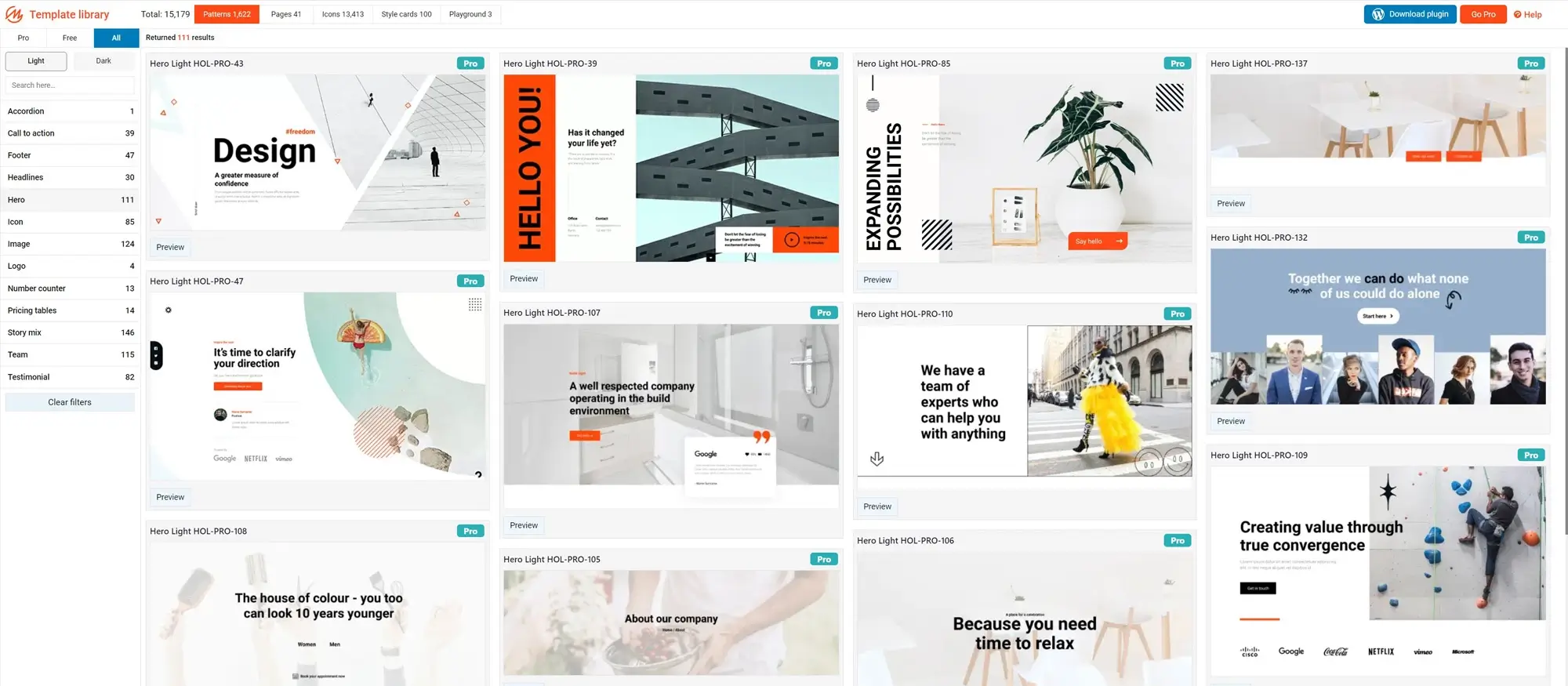
What are style cards and how do they customise your website?
Style cards are a unique feature in MaxiBlocks that allow you to apply a complete design style to your website with just one click. They include coordinated sets of visual elements like colours, fonts, link styles, and hover effects, helping you create a polished and professional look instantly.
Instantly apply new colours, fonts, and effects
When you apply a style card, it updates your site’s colours, typography, button styles, and hover effects across every page. This ensures design consistency and helps reinforce your brand identity.
Over 100 style variations to choose from
MaxiBlocks offers more than 100 style card variations, giving you a wide range of visual options to suit your personal or business brand. Whether your site is bold and modern or clean and minimalist, there’s a style card to match.
Customise and save your own style cards
If you like a particular colour scheme but want to tweak fonts or link styles, you can modify an existing style card and save it as your own. This allows you to maintain creative control while speeding up the design process.
Consistent hover styles
Style cards also manage hover effects for links and buttons. This ensures that interactive elements follow the same design language as the rest of your site, enhancing both appearance and usability.
Build a cohesive blog with MaxiBlocks
Using MaxiBlocks for your blog ensures your site remains well-organised, consistent, and easy to navigate. With full access to the Gutenberg template library, block themes, and style cards, you can quickly find a look that fits your vision.
Explore different layouts, customise your design, and build a standout WordPress blog with MaxiBlocks with no coding required.
Conclusion
MaxiBlocks offers a powerful and user-friendly way to build a professional WordPress blog using the Gutenberg editor. With access to responsive templates, reusable block patterns, custom style cards, and full-site editing tools, you can create a visually consistent and engaging blog without needing coding skills.
Whether you’re just starting out or refining an existing site, MaxiBlocks gives you the flexibility to design faster, maintain brand consistency, and deliver a seamless user experience. Start building your blog today with MaxiBlocks and take full advantage of everything modern WordPress has to offer.
WordPress themes for every style and project
Find beautiful WordPress themes for portfolios, businesses, blogs, and online stores.
FAQs – about blogging with WordPress and MaxiBlocks
What is MaxiBlocks?
MaxiBlocks is a free WordPress block theme and visual builder that works with the Gutenberg editor. It includes custom blocks, templates, and style cards to help you design professional websites without coding.
Is MaxiBlocks suitable for beginners?
Yes, MaxiBlocks is beginner-friendly. Its drag-and-drop editor, ready-made templates, and easy-to-use block patterns make it ideal for anyone starting a blog.
What makes MaxiBlocks different from other page builders?
MaxiBlocks has no locked blocks, domain restrictions, or licence keys. It also features style cards and a large pattern library, giving you more freedom and speed in your design process.
Can I customise every part of my blog with MaxiBlocks?
Yes. MaxiBlocks supports full site editing, allowing you to customise your entire layout including headers, footers, and sidebars within the Gutenberg editor.
What are Gutenberg block patterns?
Block patterns are reusable groups of blocks designed to simplify layout creation. MaxiBlocks includes a wide range of patterns for blogs, business sites, and more.
Are the templates responsive?
Yes. All templates and patterns in MaxiBlocks are fully responsive, adapting automatically to desktop, tablet, and mobile screen sizes.
What are style cards in MaxiBlocks?
Style cards are pre-set design themes that instantly update your site’s colours, fonts, and hover styles to ensure a consistent look and feel across all pages.
Can I build a personal blog with MaxiBlocks?
Absolutely. MaxiBlocks offers templates and patterns tailored to personal blogging, helping you create a clean, engaging layout that supports storytelling.
Is MaxiBlocks free to use?
Yes. MaxiBlocks is 100% free to use with no hidden features or limitations. All design tools and templates are included at no cost.
How do I choose the right WordPress theme for my business?
Start by thinking about what kind of design fits your brand. If you need help narrowing it down, check this guide on choosing the best WordPress themes for business websites. You can explore curated picks in this list of top themes or get ideas from 10 recommended themes. There are also free options if you’re just starting out. For more control, learn how to create a custom theme.
What are block themes in WordPress?
Block themes are designed to work with the WordPress Site Editor. They let you customise your entire website visually, using blocks for headers, footers, layouts, and more. To get familiar, check what WordPress block themes are, then explore how they function and how they differ from classic themes. You can also see examples of the best block themes or dive deeper at this guide and this summary.
Are there industry-specific themes available?
Yes, many WordPress themes are built for specific industries. If you’re in architecture, see the architecture theme. For trades and services, check themes for upholsterers and carpet cleaning businesses. Personal service businesses can explore this theme for hairdressers. If you want something more creative, visit this example theme.
Can I design and sell WordPress themes myself?
Yes, you can build and sell your own block themes using tools available in WordPress. Start with this guide to building and selling block themes, and explore how to monetise your work. It’s important to make sure your themes are block-enabled and compatible with WordPress. If you’re designing for clients, this guide to web design with blocks is worth a look.
What other tools and tips can help improve my site?
Plugins can add extra features to any theme. Explore popular WordPress plugins for added functionality. For search optimisation, this guide on block themes and SEO shows how to improve visibility. If you’re new to WordPress, start with this step-by-step guide to building your site. Business owners can also find value in theme selection tips and advice on Gutenberg-friendly tools.
How do I get started with MaxiBlocks?
Go to your WordPress dashboard, navigate to Plugins > Add New, search for “MaxiBlocks,” install it, and start customising your blog using its templates and design tools.
WordPress itself
Official Website
wordpress.org – This is the official website for WordPress, where you can download the software, find documentation, and learn more about using it.
WordPress Codex
codex.wordpress.org/Main_Page – This is a comprehensive documentation resource for WordPress, covering everything from installation and configuration to specific functionality and troubleshooting.
WordPress Theme Directory
wordpress.org/themes – The official WordPress theme directory is a great place to find free and premium WordPress themes. You can browse themes by category, feature, and popularity.
maxiblocks.com/go/help-desk
maxiblocks.com/pro-library
www.youtube.com/@maxiblocks
twitter.com/maxiblocks
linkedin.com/company/maxi-blocks
github.com/orgs/maxi-blocks
wordpress.org/plugins/maxi-blocks

Kyra Pieterse
Author
Kyra is the co-founder and creative lead of MaxiBlocks, an open-source page builder for WordPress Gutenberg.
You may also like
